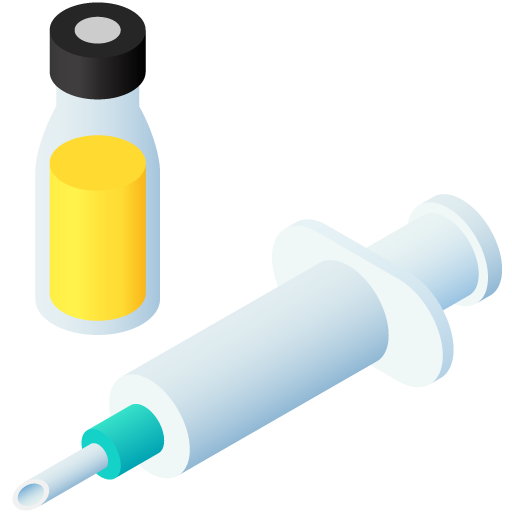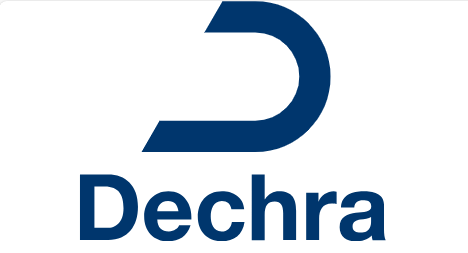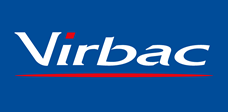Combination therapy
No results were found for your selected species
Cevac Transmune
Active substance
ATC code
Species
Chickens and embryonated chicken eggs.
Indications
For the active immunisation of 18-day-old embryonated broiler hatching eggs or 1-day-old broiler chickens from hens vaccinated against IBD, to reduce mortality, clinical disease, weight loss and acute lesions of bursa of Fabricius associated with infection caused by very virulent Avian Infectious Bursal Disease (IBD) viruses.
The release of the vaccine virus from the complex (and therefore immunisation) is influenced by the natural decline of maternally derived antibodies (MDA), and has been found not to occur until MDA has reached relatively low levels.
The onset of clinical protection depends on the initial MDA level. In vaccinated broilers it is achieved within 1 day after the first signs of vaccine virus effect in the bursa of Fabricius.
Onset of immunity: between 21 and 32 days of age. Duration of immunity: up to 42 days of age.
The virulent challenge tests conducted to support the claim were carried out on broilers having an MDA ELISA titre of 6,000 (1-day-old chicks).
Field trials carried out showed that vaccine virus replication in the bursa of Fabricius occurs in broilers having at hatch MDA titre levels of up to 14,000 ELISA units, but the protection of these birds was evaluated only based on serological data and histology of the bursa of Fabricius.
Dose to be administered and administration route
In-ovo administration
The vaccine is to be administered once at the 18th day of embryonation using in-ovo equipment. The injection volume is 0.05 ml per dose for in-ovo administration. The vaccine is delivered to the amnion sac or, rarely, into the body of the embryo causing no decrease in hatchability.
Use sterile devices and equipment for reconstitution and for administration of the vaccine.
Subcutaneous administration
The vaccine is to be administered once at 1-day of age, automatic syringe may be used. The injection volume is 0.1 ml per dose for subcutaneous administration. The vaccine is delivered under the skin of the neck.
Use sterile devices and equipment for reconstitution and for administration of the vaccine.
Reconstitution of the vaccine
For the reconstitution of Cevac Transmune, PBS, Saline solution or Cevac Solvent Poultry can be used.
In-ovo administration of 0.05 ml per dose:
1. Calculate and prepare the required volume of the reconstituted vaccine as follows:
|
Cevac Transmune |
Solvent |
|
1 x 2,000 doses |
100 ml |
|
1 x 4,000 doses |
200 ml |
|
1 x 5,000 doses |
250 ml |
|
2 x 2,500 doses |
250 ml |
|
2 x 4,000 doses |
400 ml |
|
2 x 5,000 doses |
500 ml |
|
4 x 4,000 doses |
800 ml |
|
4 x 5,000 doses |
1,000 ml |
|
1 x 8,000 doses |
400 ml |
|
6 x 4,000 doses |
1200 ml |
|
8 x 4,000 doses |
1600 ml |
2. Draw up 2 ml of the solvent and transfer into the glass vial containing the lyophilised component.
3. Completely dissolve the vaccine by shaking gently and transfer it into the plastic solvent bottle.
4. Rinse the vial with another 2 ml liquid and transfer the rinsing liquid into the plastic solvent bottle.
5. Repeat this rinsing operation.
Administration of the vaccine:
Follow the User Manual instructions for the in-ovo injector equipment. The reconstituted vaccine should be used within 2 hours.
Subcutaneous administration of 0.1 ml per dose:
1. Calculate and prepare the required volume of the reconstituted vaccine as follows:
|
Cevac Transmune |
Solvent |
|
1 x 2,000 doses |
200 ml |
|
1 x 2,500 doses |
250 ml |
|
1 x 4,000 doses |
400 ml |
|
1 x 5,000 doses |
500 ml |
|
2 x 4,000 doses |
800 ml |
|
2 x 5,000 doses |
1,000 ml |
|
1 x 8,000 doses |
800 ml |
|
3 x 4,000 doses |
1200 ml |
|
4 x 4,000 doses |
1600 ml |
2. Draw up 2 ml of the solvent and transfer into the glass vial containing the lyophilised component.
3. Completely dissolve the vaccine by shaking gently and transfer it into the plastic solvent bottle.
4. Rinse the vial with another 2 ml liquid and transfer the rinsing liquid into the plastic solvent bottle.
5. Repeat this rinsing operation.
Administration of the vaccine:
Follow the User Manual instructions for the automatic syringe. The reconstituted vaccine should be used within 2 hours.
Adverse reactions
In vaccinated chickens, mild to moderate lymphocyte depletion is very commonly observed after the vaccine take, which is maximal at around 7 days after vaccine take. After 7 days, this depletion decreases and is followed by lymphocyte repopulation and regeneration of the bursa of Fabricius. In some cases, the replication of the vaccine strain may be prolonged (e.g. due to presence of very high maternal antibody titres in 1 day old chicks), and bursa scores can reach a maximum of 2.8 between 35 and 42 days of age, which does not affect the production parameters of the flock.
The frequency of adverse reactions is defined using the following convention:
- very common (more than 1 in 10 animals treated displaying adverse reaction(s))
- common (more than 1 but less than 10 animals in 100 animals treated)
- uncommon (more than 1 but less than 10 animals in 1,000 animals treated)
- rare (more than 1 but less than 10 animals in 10,000 animals treated)
- very rare (less than 1 animal in 10,000 animals treated, including isolated reports)
Dispensing
POM-V - Prescription Only Medicine – VeterinarianSUMMARY OF PRODUCT CHARACTERISTICS
1. NAME OF THE VETERINARY MEDICINAL PRODUCT
CEVAC TRANSMUNE Lyophilisate for Suspension for Injection with Solvent for Chickens
2. QUALITATIVE AND QUANTITATIVE COMPOSITION
Each dose of reconstituted vaccine (0.05 ml in-ovo or 0.1 ml subcutaneous) contains:
Active substance:
Live attenuated infectious bursal disease (IBD) virus, strain Winterfield 2512 at least 0.1 CID50*
Excipients:
BDA (bursal disease antibody) at least 90 VN titre**
* CID50 (Chicken Infective Dose 50%) ** VN titre (virus neutralisation titre)
For a full list of excipients see section 6.1.
3. PHARMACEUTICAL FORM
Lyophilisate for suspension for injection with solvent.
Pale brown lyophilisate for reconstitution with a water-clear, colourless or a clear red solvent provided for injection.
4. CLINICAL PARTICULARS
4.1 Target species
Chickens and embryonated chicken eggs.
4.2 Indications for use specifying the target species
For the active immunisation of 18-day-old embryonated broiler hatching eggs or 1-day-old broiler chickens from hens vaccinated against IBD, to reduce mortality, clinical disease, weight loss and acute lesions of bursa of Fabricius associated with infection caused by very virulent Avian Infectious Bursal Disease (IBD) viruses.
The release of the vaccine virus from the complex (and therefore immunisation) is influenced by the natural decline of maternally derived antibodies (MDA), and has been found not to occur until MDA has reached relatively low levels.
The onset of clinical protection depends on the initial MDA level. In vaccinated broilers it is achieved within 1 day after the first signs of vaccine virus effect in the bursa of Fabricius.
Onset of immunity: between 21 and 32 days of age. Duration of immunity: up to 42 days of age.
The virulent challenge tests conducted to support the claim were carried out on broilers having an MDA ELISA titre of 6,000 (1-day-old chicks).
Field trials carried out showed that vaccine virus replication in the bursa of Fabricius occurs in broilers having at hatch MDA titre levels of up to 14,000 ELISA units, but the protection of these birds was evaluated only based on serological data and histology of the bursa of Fabricius.
4.3 Contraindications
Do not use in eggs or in 1-day-old chickens coming from broiler breeder flocks not vaccinated according to an IBD immunisation program. (Refer to section 4.5.)
Do not use in1-day-old chickens hatched from eggs vaccinated in-ovo with Cevac Transmune.
4.4 Special warnings for each target species Vaccinate healthy animals only.
Chicken embryos on the 18th day of incubation
In-ovo injection equipment must be used for in-ovo administration. Device(s) used for the reconstitution of the vaccine and for injection should be sterile and free from any residues of chemical disinfectant.
The device should be proven to safely and effectively deliver the appropriate 0.05 ml dose of the vaccine directly into the amniotic cavity or the embryo.
Before every in-ovo application the vaccination technique can be checked by use of a colour solution. The manufacturer's instructions of the device must be strictly followed. For cleaning of the instrument only products approved by the manufacturer may be used. It is recommended to use 0.4-0.8 mm diameter needles, having length from 25-28 mm and perforation air pressure between 3.5 bar (50 psi) and 5 bar (72 psi).
1-day-old broiler chickens
Automatic syringe may be used for subcutaneous administration. Device(s) used for the reconstitution of the vaccine and for injection should be sterile and free from any residues of chemical disinfectant. The device should be proven to safely and effectively deliver the appropriate 0.1 ml dose of the vaccine. The instructions for use of this device should be strictly followed.
The vaccine must be inoculated under the skin of the neck of the 1-day-old broiler chickens. For cleaning of the automatic syringe, only products approved by the manufacturer may be used.
Residues of chemical disinfectant on the inner surface of devices and equipment used for reconstitution and application can destroy live virus and decrease the efficacy of the vaccine.
4.5 Special precautions for use
Special precautions for use in animals
Chicken embryos on the 18th day of incubation
The vaccine contains a strain of "intermediate-plus" virulence. In birds without MDA the inoculation of the vaccine results in significant immunosuppression and bursal damage. Therefore, it is not recommended to vaccinate eggs coming from flocks with MDA titre levels in 1-day-old chickens lower than 3,000 ELISA units.
Preliminary survey to be used to estimate MDA level of the chicks: 20, 1-day-old chicks originating from the same breeding flock should be sampled to measure their serological status to IBDV. The results of this sampling will indicate if the MDA level can be expected to be at least 3,000 ELISA units in the hatches of the following 4 weeks from this flock, and therefore that they are suitable for Cevac Transmune vaccination. According to results and needs, this survey has to be repeated at different times of the laying period.
The vaccine virus is excreted by vaccinated birds and can spread to susceptible birds and can be detected in unvaccinated birds 4-7 days later. To control the spread of the virus, the immunisation devices used for injection and the hatchery premises should be decontaminated after vaccination.
Chickens from vaccinated eggs should not be mixed with chickens from unvaccinated eggs.
Precautions should be taken regarding between-house spread. Whole site vaccination is recommended. Poultry houses should be decontaminated between batches of chickens.
Satisfactory protection can be achieved only in properly developed embryos at the 18th day of hatching. It is suggested to candle the eggs to be injected and discard eggs containing dead embryos.
1-day-old broiler chickens
The vaccine contains a strain of "intermediate-plus" virulence. In birds without MDA the inoculation of the vaccine results in significant immunosuppression and bursal damage. Therefore, it is not recommended to vaccinate chicks coming from flocks with 1-day-old MDA titre levels lower than 3,000 ELISA units.
Preliminary survey to be used to estimate MDA level of the chicks: 20, 1-day-old chicks originating from the same breeding flock should be sampled to measure their serological status to IBDV. The results of this sampling will indicate if the MDA level can be expected to be at least 3,000 ELISA units in the hatches of the following 4 weeks from this flock, and therefore that they are suitable for Cevac Transmune vaccination. According to results and needs, this survey has to be repeated at different times of the laying period.
The vaccine virus is excreted by vaccinated birds and can spread to susceptible birds and can be detected in unvaccinated birds 4-7 days later. To control the spread of the virus, the immunisation devices used for injection and the hatchery premises should be decontaminated after vaccination.
Vaccinated chickens should not be mixed with unvaccinated chickens.
Precautions should be taken regarding between-house spread. Whole site vaccination is recommended. Poultry houses should be decontaminated between batches of chickens.
Satisfactory protection can be achieved only in healthy 1-day-old chickens.
Special precautions to be taken by the person administering the veterinary medicinal product to animal
Vaccinating personnel should wash and disinfect hands after use.
4.6 Adverse reactions (frequency and seriousness)
In vaccinated chickens, mild to moderate lymphocyte depletion is very commonly observed after the vaccine take, which is maximal at around 7 days after vaccine take. After 7 days, this depletion decreases and is followed by lymphocyte repopulation and regeneration of the bursa of Fabricius. In some cases, the replication of the vaccine strain may be prolonged (e.g. due to presence of very high maternal antibody titres in 1 day old chicks), and bursa scores can reach a maximum of 2.8 between 35 and 42 days of age, which does not affect the production parameters of the flock.
The frequency of adverse reactions is defined using the following convention:
- very common (more than 1 in 10 animals treated displaying adverse reaction(s))
- common (more than 1 but less than 10 animals in 100 animals treated)
- uncommon (more than 1 but less than 10 animals in 1,000 animals treated)
- rare (more than 1 but less than 10 animals in 10,000 animals treated)
- very rare (less than 1 animal in 10,000 animals treated, including isolated reports)
4.7 Use during pregnancy, lactation or lay
Do not use in eggs intended for hatching of layers or broiler breeders.
Do not use in 1-day-old chickens intended for layers or broiler breeders.
4.8 Interaction with other medicinal products and other forms of interaction
Safety and efficacy data are available which demonstrate that this vaccine can be mixed and administered with Vectormune ND by in-ovo or subcutaneous vaccination. The mixed products protect against Avian Infectious Bursal Disease (IBD) viruses, Newcastle disease virus and Marek’s disease virus. The safety and efficacy of the mixed vaccines are not different from those described for the vaccines administered separately. Read also the product information of Vectormune ND before use.
For the associated reconstitution of Vectormune ND and Cevac Transmune, the Cevac Solvent Poultry should be used.
In-ovo:
One single dose of 0.05 ml is injected into each 18-day-old embryonated broiler chicken egg.
Match the dose size of the vaccines and the Cevac Solvent Poultry according to the table below.
|
Vectormune ND |
Cevac Transmune |
Cevac Solvent Poultry |
|
2 x 2,000 doses |
2 x 2,000 doses |
200 ml |
|
1 x 4,000 doses |
1 x 4,000 doses |
200 ml |
|
2 x 4,000 doses |
2 x 4,000 doses |
400 ml |
|
4 x 4,000 doses |
4 x 4,000 doses |
800 ml |
|
5x4000 doses |
5x4000 doses |
1000 ml |
|
6x4000 doses |
6x4000 doses |
1200 ml |
|
8x4000 doses |
8x4000 doses |
1600 ml |
Subcutaneous use:
One single injection of 0.2 ml per chick is applied at one day of age.
Match the dose size of the vaccines and the Cevac Solvent Poultry according to the table below.
|
Vectormune ND |
Cevac Transmune |
Cevac Solvent Poultry |
|
2 x 1,000 doses |
1 x 2,000 doses |
400 ml |
|
1 x 2,000 doses |
1 x 2,000 doses |
400 ml |
|
2 x 2,000 doses |
2 x 2,000 doses |
800 ml |
|
1 x 4,000 doses |
1 x 4,000 doses |
800 ml |
|
4000 + 1000 doses |
4000 + 1000 doses |
1000 ml |
|
3 x 2000 doses |
3 x 2000 doses |
1200 ml |
|
2 x 4000 doses |
2 x 4000 doses |
1600 ml |
Draw up 2 ml of Cevac Solvent Poultry into a 5 ml syringe then draw up the thawed content of Vectormune ND ampoule in it.
Draw up 2 ml of Cevac Solvent Poultry into another 5 ml syringe then dissolve the content of Cevac Transmune vial in it.
Transfer the dissolved vaccines into the solvent bag and mix by gentle agitation.
No information is available on the safety and efficacy of this vaccine when used with any other veterinary medicinal product, except Vectormune ND. A decision to use this vaccine before or after any other veterinary medicinal product therefore needs to be made on a case-by-case basis.
4.9 Amounts to be administered and administration route
In-ovo administration
The vaccine is to be administered once at the 18th day of embryonation using in-ovo equipment. The injection volume is 0.05 ml per dose for in-ovo administration. The vaccine is delivered to the amnion sac or, rarely, into the body of the embryo causing no decrease in hatchability.
Use sterile devices and equipment for reconstitution and for administration of the vaccine.
Subcutaneous administration
The vaccine is to be administered once at 1-day of age, automatic syringe may be used. The injection volume is 0.1 ml per dose for subcutaneous administration. The vaccine is delivered under the skin of the neck.
Use sterile devices and equipment for reconstitution and for administration of the vaccine.
Reconstitution of the vaccine
For the reconstitution of Cevac Transmune, PBS, Saline solution or Cevac Solvent Poultry can be used.
In-ovo administration of 0.05 ml per dose:
1. Calculate and prepare the required volume of the reconstituted vaccine as follows:
|
Cevac Transmune |
Solvent |
|
1 x 2,000 doses |
100 ml |
|
1 x 4,000 doses |
200 ml |
|
1 x 5,000 doses |
250 ml |
|
2 x 2,500 doses |
250 ml |
|
2 x 4,000 doses |
400 ml |
|
2 x 5,000 doses |
500 ml |
|
4 x 4,000 doses |
800 ml |
|
4 x 5,000 doses |
1,000 ml |
|
1 x 8,000 doses |
400 ml |
|
6 x 4,000 doses |
1200 ml |
|
8 x 4,000 doses |
1600 ml |
2. Draw up 2 ml of the solvent and transfer into the glass vial containing the lyophilised component.
3. Completely dissolve the vaccine by shaking gently and transfer it into the plastic solvent bottle.
4. Rinse the vial with another 2 ml liquid and transfer the rinsing liquid into the plastic solvent bottle.
5. Repeat this rinsing operation.
Administration of the vaccine:
Follow the User Manual instructions for the in-ovo injector equipment. The reconstituted vaccine should be used within 2 hours.
Subcutaneous administration of 0.1 ml per dose:
1. Calculate and prepare the required volume of the reconstituted vaccine as follows:
|
Cevac Transmune |
Solvent |
|
1 x 2,000 doses |
200 ml |
|
1 x 2,500 doses |
250 ml |
|
1 x 4,000 doses |
400 ml |
|
1 x 5,000 doses |
500 ml |
|
2 x 4,000 doses |
800 ml |
|
2 x 5,000 doses |
1,000 ml |
|
1 x 8,000 doses |
800 ml |
|
3 x 4,000 doses |
1200 ml |
|
4 x 4,000 doses |
1600 ml |
2. Draw up 2 ml of the solvent and transfer into the glass vial containing the lyophilised component.
3. Completely dissolve the vaccine by shaking gently and transfer it into the plastic solvent bottle.
4. Rinse the vial with another 2 ml liquid and transfer the rinsing liquid into the plastic solvent bottle.
5. Repeat this rinsing operation.
Administration of the vaccine:
Follow the User Manual instructions for the automatic syringe. The reconstituted vaccine should be used within 2 hours.
4.10 Overdose (symptoms, emergency procedures, antidotes), if necessary
No adverse reactions were observed other than stated in section 4.6, when a 10-fold overdose was administered.
4.11 Withdrawal period(s) Zero days.
5. IMMUNOLOGICAL PROPERTIES
To stimulate active immunity against very virulent infectious bursal disease viruses in broiler chickens from hens vaccinated against IBD. The vaccine contains the live intermediate plus IBDV strain Winterfield 2512 bound to specific immunoglobulins. Both components form a complex which is administered through vaccination. The Winterfield 2512 vaccine virus, applied as a non-immune-complex vaccine results in a mean histological lesion score of 2.2 in the bursa of Fabricius, 28 days after vaccination (after oral vaccination of 1-day-old SPF chicken with 10 doses). The severity and duration of lesions is less significant following administration of the immune-complex vaccine.
Pharmacotherapeutic group: immunologicals for Aves, live viral vaccines for domestic fowl. ATC-vet code: QI01AD09.
6. PHARMACEUTICAL PARTICULARS
6.1 List of excipients
|
Lyophilisate: |
BDA (bursal disease antibody) Cyclodextrin Sucrose Monosodium glutamate Potassium dihydrogen phosphate Dipotassium hydrogen phosphate. |
|
Solvent (PBS): |
Sodium chloride Potassium chloride Disodium phosphate dihydrate Potassium dihydrogen phosphate Water for injections. |
Solvent (Saline solution): Sodium chloride
Water for injections.
Solvent (Cevac Solvent Poultry):
Sucrose
Casein hydrolysate
Sorbitol
Dipotassium hydrogen phosphate
Potassium dihydrogen phosphate
Phenol red
Water for injections.
6.2 Major incompatibilities
Do not mix with any other veterinary medicinal product, except Vectormune ND and the solvents supplied for use with the veterinary medicinal product.
6.3 Shelf life
Shelf life of the lyophilisate as packaged for sale: 2 years.
Shelf life of the solvent (PBS) as packaged for sale: 43 months.
Shelf life of the solvent (Saline solution) as packaged for sale:
• Polyolefin based plastic bags equipped with infusion port, rubber stopper with flip off cap: 33 months.
• Polyolefin based plastic bags equipped with single or double tubes, closed with injection port or rubber stopper with flip off cap: 2 years.
Shelf life of the solvent (Cevac Solvent Poultry) as packaged for sale: 30 months.
Shelf-life after reconstitution (in PBS, Saline solution or Cevac Solvent Poultry) according to directions: 2 hours.
6.4 Special precautions for storage
Lyophilisate: store and transport refrigerated (2 °C – 8 °C). Protect from light.
Solvents: store below 25°C. Do not freeze.
6.5 Nature and composition of immediate packaging
Lyophilisate:
Cardboard box with single or 20 glass vials (Type I) of 10 ml containing 2000, 2500, 4000 or 5000 doses, and of 13.5 ml containing 8000 doses, closed with a bromobutyl stopper and sealed with aluminium caps with plastic tear-off centres.
Solvent (PBS):
Cardboard box with single, 5 or 20 plastic bottles (LDPE), of 100, 200, 250, 400 or 500 ml solvent, closed with a bromobutyl stopper and sealed with aluminium caps with plastic tearoff centres.
Solvent (Saline solution):
• Polyolefin based plastic bags equipped with infusion port, rubber stopper with flip off cap: 500 ml, 1000 ml, 5 x 500 ml, 5 x 1000 ml.
• Polyolefin based plastic bags equipped with single or double tubes, closed with injection port or rubber stopper with flip off cap: 250 ml, 500 ml, 1000 ml, 5 x 250 ml, 5 x 500 ml, 5 x 1000 ml.
Solvent (Cevac Solvent Poultry):
Polyvinylchloride bag containing 200 ml, 400 ml, 800 ml, 1000 ml, 1200 ml, 1600 ml in individual over-pouch.
Not all pack sizes may be marketed.
6.6 Special precautions for the disposal of unused veterinary medicinal products or waste materials derived from the use of such products
Any unused veterinary medicinal product or waste materials derived from such veterinary medicinal product should be disposed of in accordance with local requirements.
7. MARKETING AUTHORISATION HOLDER
Ceva Animal Health Limited
Explorer House
Mercury Park
Wycombe Lane
Wooburn Green
High Wycombe
Buckinghamshire
HP10 0HH
United Kingdom
8. MARKETING AUTHORISATION NUMBER
Vm 15052/4030
9. DATE OF FIRST AUTHORISATION
20 October 2006
10. DATE OF REVISION OF THE TEXT
September 2022
Approved 27 September 2022


| Art. Nr. | 15052/4030 |
|---|---|
| EAN | 3411112269457 |
 TRUSTED SOURCE
TRUSTED SOURCE








